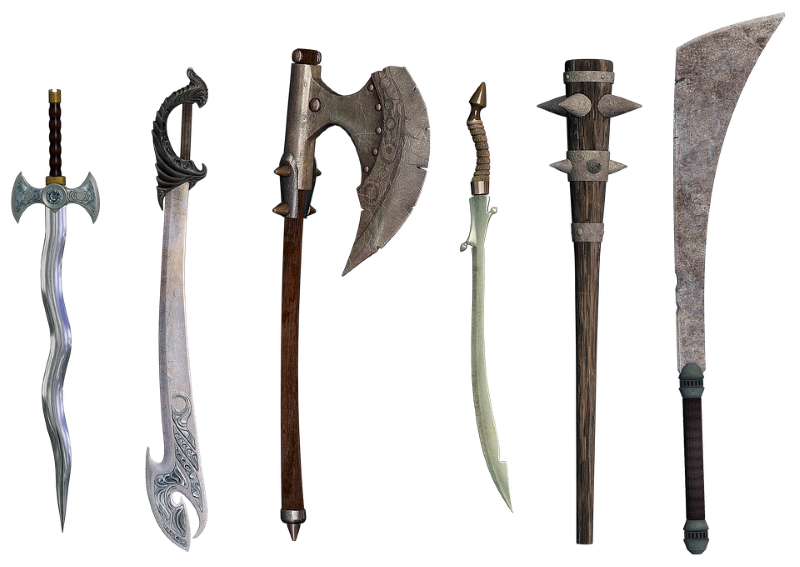Relive Medieval London’s Bloody Murders With This New Interactive Death Map
The macabre tool features tales of revenge, thwarted love, infanticide—and a urinal that drove a man to murder
/https://tf-cmsv2-smithsonianmag-media.s3.amazonaws.com/filer/65/13/6513ee45-8c8c-4ada-a882-937e43f9ff73/murdermedieval2811.jpg)
It was the priest in Dunstan Parish with the small knife, the brother in the Tower of London with the stave, the Welsh tailor in St. Mary Woolnoth with the broad-bladed knife—or so the new “London Medieval Murder Map,” an interactive database of 142 brutal 14th-century homicides, tells us.
The macabre tool, which draws on city coroners’ rolls dating to between 1300 and 1340, is the brainchild of the University of Cambridge’s Manuel Eisner, an expert in the history of violence. As Eisner tells the Guardian’s Nicola Davis, the map reveals a surprising number of commonalities between medieval murders and contemporary homicides: Both tend to begin with altercations “of a very trivial nature.” They occur with the highest frequency on days when individuals don’t have to work and they overwhelmingly take place during the evening.
An August 1326 attack that left one Roger Styward of Hamptone “dead of unnatural causes” offers an apt example of the arbitrary nature of some altercations. According to the map, Styward was hawking a bucket of eel skins on Cordewanerstrete when he dropped his wares outside of a storefront, attracting the ire of two shopkeepers and an apprentice. The apprentice “struck Roger with the palm of his hand under the left jaw.” One of the shopkeepers followed the hapless merchant as he tried to continue on his way and delivered a blow that sent Styward falling to the ground. The attacker “then kicked him as he lay down,” inflicting such severe injuries that his victim died soon thereafter.
Other killings are reflective of more premeditated plans: In January 1322, John de Eddeworth and unknown conspirators ambushed John de Tygre—a man who’d previously murdered Eddeworth’s brother, Osbert Pledour—at the top of Sopers-Lane in the Cheap Ward. De Eddeworth “stabbed him five times with his sword, three times on the back of his head, once on the left side, and once under his left ear.” As the map notes, the crime represented a “brutal revenge killing at midnight in the middle of London.”
The research places medieval London’s murder rate (based on an estimated population of 80,000) between 15 to 20 times higher than that of a similarly sized modern city in the UK. But that doesn’t necessarily mean we’ve evolved into a less violent species. On one hand, the modern world has seen a rise in advanced killing tools such as firearms, but on the other, we live in a much more advanced state of emergency care.
Poor understanding of medical practices certainly made it difficult for medieval caregivers to treat victims of violence: In an interview with CNN’s Tara John, Eisner says that over 18 percent of individuals attacked survived at least a week after the initial trauma, eventually dying of infection or blood loss.

Eisner tells Rob Waugh of Metro that the map’s seemingly staggering level of violence—markers cluster around Leadenhall Market and the neighborhood where Styward was killed, overwhelming the tool’s quaint archival background with patches of bold red color—can be at least partially attributed to the widespread availability of deadly weapons during the medieval period. He explains, “Weapons were never far away, male honour had to be protected, and conflicts easily got out of hand.”
The Evening Standard’s Megan White further notes that daggers and swords proved to be the most popular weapon of choice, appearing in 68 percent of all catalogued cases. Thick “quarter staff poles” popped up in 19 percent of cases.
Interestingly, religious buildings proved three times as dangerous as brothels, though public streets and markets were the top centers of violence. And men of the cloth were far from immune to violence: In June 1320, an elderly monk named Henry of Ireland accused Richard of Southampton of embezzling rents and properties belonging to the chapel. Incensed, Richard punched, slapped and shook “the living daylights out of” him. Four years later, John of Woodhall, rector of Hartley Wintney near Basingstoke, drew his sword and struck a retired soldier on the right side of his head as the two were on their way to visit the Bishop of Bath and Wells.
The majority of the 142 crimes revolve around male perpetrators, but four feature female suspects. White outlines these unusual cases, writing that one involved a woman who “cuffed” a five-year-old boy beneath his left ear after catching him in the process of stealing a small amount of wool. Oddly enough, the map notes that “he died from being cuffed and not from any more serious offence.” Another crime found a prostitute named Agnes quarreling with a pregnant woman named Lucy, striking her “on the belly with fist and knees and … leaving her half-dead in the street,” while the third was the “likely infanticide of baby Alice” at the hands of a beggar-woman known as Nicola from Cardiff. The final case tells a classic story of love turned sour, with a woman named Isabella Heron stabbing her fishmonger-lover to death in the midst of a heated quarrel.
Eisner’s “favorite murder,” according to CNN, took place in January 1322. William, son of goldsmith Henry at Rowe, was using a urinal in Cheapside when he inadvertently sprayed onto the shoes of an unknown young man. After the man complained, William punched him, knocking the unfortunate, urine-covered man's pollaxe to the ground. At this point, a bystander named Philip intervened, further angering William, who picked up the axe and delivered a glancing blow to the forehead “that penetrated to the brain.” (Aside from stained shoes, the other man emerged from the fray intact.)
“I like it because you get an idea of the smells and sounds of central London," Eisner concludes. "You get a sense of the kinds of daily conflict."
/https://tf-cmsv2-smithsonianmag-media.s3.amazonaws.com/accounts/headshot/mellon.png)
/https://tf-cmsv2-smithsonianmag-media.s3.amazonaws.com/accounts/headshot/mellon.png)